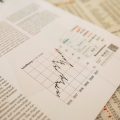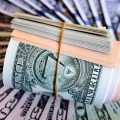The US economy exceeded expectations in the third quarter of this year. According to the government’s first estimates, it expanded by around 4.9% between July and September. That’s the fastest growth we’ve seen in almost a year – super impressive, considering the experts predicted only 4.5%.
A major factor was the rockin’ job market, which allowed people to earn bigger paychecks and splurge on fun stuff throughout the summer. We’re talking concerts, movies, gaming at casinos and online sites like https://ggbetcenter.net/tl-ph/casino, vacations – you name it! With consumer spending making up over two-thirds of all economic activity here, keeping that money flowing is a huge win.
The US Bureau of Economic Analysis dove into what exactly drove the awesome growth. Turns out it was a triple threat: increased consumer spending, businesses investing more in themselves, and government spending all coming together to create this feel-good comeback.
To fight the beast that is inflation, central banks have been making it pricier to borrow money by aggressively hiking interest rates. The goal is to slow down the insane rise in prices we’ve seen recently.
So far, the US economy is totally outperforming expectations, which is great news. But Kathy Bostjancic, Chief Economist at Nationwide, thinks consumers may be tapping into the last of their pandemic savings from stimulus checks. She expects we could see a slowdown in the final three months of 2023 as folks tighten their belts again.
In a separate update, the US Labor Department reported that the number of people applying for unemployment benefits remains low. However, growth in the last quarter of the year may face challenges due to strikes by the United Auto Workers and the resumption of student loan repayments by millions of Americans, which could place additional financial pressure on households.
On the global front, the European Central Bank (ECB) decided to maintain unchanged interest rates as the effects of previous rate hikes continued to influence the Eurozone economy. After ten consecutive rate increases, Eurozone inflation, which peaked at 10.6% in October 2022, has gradually subsided to 4.3% in September. While prices are still rising, the ECB has expressed that borrowing costs have reached a level considered high enough, and the impacts of earlier rate hikes are still unfolding. The ECB’s governing council maintained its outlook, expecting inflation to remain “too high for too long” but affirmed that the current interest rate levels, if sustained over an extended period, would make a “substantial contribution” to achieving the target of 2% inflation.
Analysts have noted that although there are lingering global economic risks tied to uncertainties in the Middle East and Ukraine, the current focus is shifting towards the possibility of rate cuts, particularly as the Eurozone economy is presently experiencing stagnation.
Inflation In The United States: Elevated Fuel Expenses Continue To Propel Consumer Prices
New data reveals that consumer prices in the United States continued their ascent in September, primarily propelled by elevated housing and gasoline expenses. The annual inflation rate for the 12 months leading up to September stood at 3.7%, maintaining the same rate as in August. Amidst these inflationary pressures, the US central bank is deliberating whether further interest rate hikes are necessary to stabilize price growth. Although inflation has moderated significantly compared to the previous year, it still exceeds the Federal Reserve’s 2% target.
Analysts are saying that the latest report from the US Labor Department doesn’t give us a clear picture of what the Federal Reserve might do next. Olu Sonola, Head of US Economics at Fitch Ratings, mentioned that although there’s an overall positive trend, the challenge of managing inflation is still there.
Between August and September, the inflation rate slowed down from 0.6% to 0.4%. The main reason behind the increase in the Consumer Price Index, which helps us track price changes, was the rising housing costs. On the other hand, gasoline prices kept going up, but at a slower rate than before. Interestingly, the prices for used cars and clothing dropped every month, and the rise in grocery prices also eased off.
The Federal Reserve has already raised interest rates significantly. Their key interest rate went from nearly zero in March 2022 to over 5.25%. This move has affected people in different ways, like higher mortgage rates and more expensive business loans. The Federal Reserve is doing this to encourage saving and slow down business growth and other economic activities. This should help cool down the economy and reduce inflation, even though it’s come down from the over 9% levels we saw last year; it’s still higher than what the Federal Reserve wants.
Federal Reserve officials are warning that they expect interest rates to stay relatively high for a while. This is partly because job growth and consumer spending have been stronger than expected. However, they’re becoming more hopeful about their ability to control inflation without causing a severe economic downturn.






